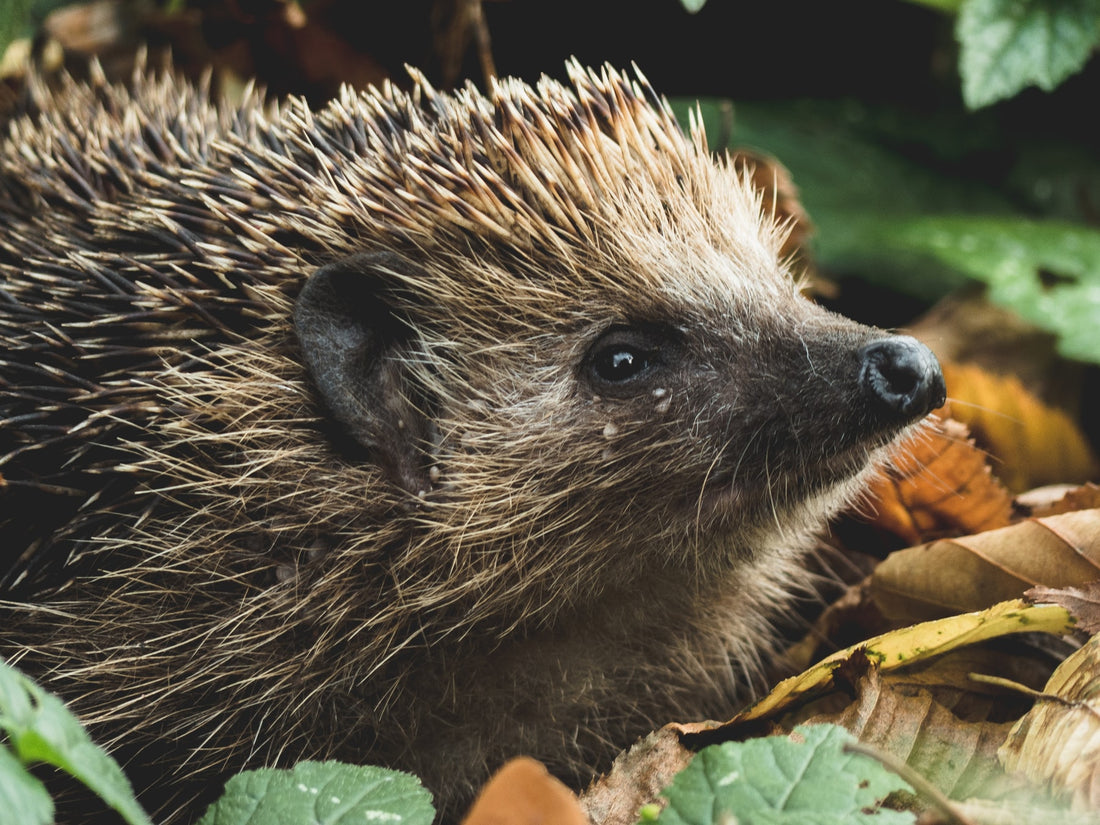Hedgehogs are adorable mammals that are members of the Erinaceidae family. This taxon includes seventeen species present across the globe, from Europe to New Zealand. Hedgehogs typically live between two and five years in the wild and, once mature, have characteristic spiny quills which protect them from predators.
Can You Keep Hedgehogs as Pets?
Most species of hedgehog are wild. However, some have been domesticated and are suitable for keeping at home.
The most common type of pet hedgehog is the North American hog, also called the African pygmy hedgehog. This species was isolated from populations living wild in Africa centuries ago and then slowly domesticated over dozens of generations. Pygmy hedgehogs are happy to live in captivity but still require a lot of looking after. They also retain their sharp, prickly quills which can damage your hands and even lead to infection if they harbour viruses and bacteria.
Most wildlife experts do not believe that keeping African pygmy hedgehogs as pets is cruel. The relationship that develops between the animal and its human owner is usually healthy and mutually beneficial.
Owners, however, need to remember that hedgehogs are naturally shy animals and will curl up into a ball if they feel threatened. It can be difficult, therefore, to get them to open up around you - literally. Many owners find themselves spending many weeks gaining their trust.
What Do Hedgehogs Eat?
In the wild, hedgehogs subsist on a diet of insects. Some of their favourite invertebrates include caterpillars, leatherjackets, carabids, earthworms, earwigs, scarabs, slugs and millipedes. The composition of their diet changes throughout the year, depending on which creepy crawlies are available.
Hedgehogs, like many other mammals, are opportunistic feeders and will take advantage of windfalls when they become available. Nature lovers have observed hedgehogs eating baby birds, bird eggs, carrion and fallen fruit.
People wanting to feed wild hedgehogs can put out meat-based cat and dog food to mimic the protein content of their natural diet. They can also use specialist hedgehog food and certain cat biscuits.
Evidence suggests that hedgehogs do not become reliant on the food that people put out in their gardens. Instead, they use it to supplement their existing sources of food, as and when they require it. View our superb range of hedgehog food here.
What Should You Feed A Pet Hedgehog?
Pet hedgehogs typically eat high-quality hedgehog food - usually a pelleted product that contains all the nutrients that they need to thrive in the correct ratio. Owners can supplement dry diets with worms and crickets, as well as a small quantity of fresh fruit and veg.
Before feeding any fruits and vegetables, you’ll want to check with your vet that you’re providing the proper nutrition. Hedgehogs should not eat lettuce or celery because of the low nutritional value. They should also avoid avocado, as this may be toxic.
If you choose to supplement with insects, you should source these from a pet store. Where possible, avoid feeding invertebrates sourced from pesticide-sprayed gardens. If you decide to raise insects from larvae yourself, you can get advice from your vet on how to do this effectively.
Please note that hedgehogs tend to gain weight quickly if you don’t monitor their food intake. You will, therefore, need to ensure that they only get the calories that they need and that they can’t feed ad libitum. You do not need to give your hedgehog any additional vitamins or minerals if they are eating a balanced, vet-approved diet.
If you are looking after a baby hedgehog, feed them tinned dog or cat food or specialist foods from wildlife suppliers. Don’t feed hoglets cow milk as this can cause diarrhoea.
How To Carry Out A Proper Hedgehog Rescue
Hedgehogs are not an endangered species, but they are a part of the UK’s biodiversity plan. For that reason, many people take the time to rescue them.
Hedgehogs may get into trouble for the following reasons:
- Too small to hibernate. If the animal weighs less than 600 grams, it won’t have sufficient fat to survive the winter in hibernation. In this case, it needs to be brought indoors and kept well-fed in a temperature-controlled environment.
- Hypothermia. Hedgehogs are nocturnal animals. However, if you find one out and about during the day, it usually means that it has gotten into trouble. If its belly feels cold to the touch, it could be a case of hypothermia. Bring it inside, place it on a hot water bottle wrapped in a towel. If it comes around, offer it some tinned dog food and water.
- Internal parasites. Many hedgehogs can develop internal parasites, including fatal lungworm. If a hedgehog seems listless or lacking in energy, get in touch with your local hedgehog rescue centre for more information and treatment options.
- Injuries. Hedgehogs are prone to a variety of injuries, including getting caught in lawn mowers and being injured by dogs. Rubbish can also harm hedgehogs, although since vendors stopped using plastic can binders, this has decreased. Again, you’ll need to assess the degree of injury before taking action.
When Do Hedgehogs Hibernate?
Hedgehogs hibernate in the wild between November and mid-March when temperatures and food supplies are at their lowest.
Hedgehogs kept in captivity can go into a state of partial hibernation when temperatures drop low enough. Unfortunately, these hibernation attempts are dangerous because most pets do not have sufficient fat reserves to see them through the winter months. Many will starve to death.
Some hedgehogs will make estivation attempts during prolonged spells of hot or dry weather in the summer too. Again, these can be very dangerous for the same reasons.
Ideally, hedgehogs in captivity should be kept in a temperature-controlled environment to prevent both hibernation and estivation. By keeping the environment between ten and twenty degrees, you will avoid triggering the biological response that leads to dormancy episodes.
Hedgehog Facts
Here are some fun facts about hedgehogs, perhaps the internet’s favourite animal:
- Hedgehogs rub their saliva all over their quills when exposed to intense or pungent smells
- In the past, there was a hedgehog Olympics which included sprints, floor exercises and hurdles
- In New Zealand, a satirical political party attempted to elect a hedgehog to parliament
- Hedgehogs were depicted in some medieval books as collecting food using their quills
- Baby hedgehogs are called urchins - and sea urchins were named after them
- Hedgehogs have special immunity from most snake venoms
- Hedgehogs usually hibernate but some decide to ride out the winter fully conscious
- Hedgehogs are one of only three hibernating mammals that live in Great Britain (the others being dormice and bats)
- Hedgehog quills are not barbed, unlike those of the porcupine
- Hedgehogs have poor eyesight, so they primarily rely on their sense of smell and hearing
- Researchers estimate that the average hedgehog has somewhere between 5, 000 and 7, 000 quills.
- Hedgehogs are solitary creatures, but when they do gather together, they are called an “array”
Where Do Hedgehogs Live?
Hedgehogs are found all over the world in a variety of different habitats in Africa, Asia, Europe and New Zealand. They make their homes in scrubland, suburban gardens, deserts, forests and savannas.
Hedgehogs, like many animals, build their homes using resources they find in the natural environment. Typically, they dig burrows around 20 inches deep and then line them with local vegetation. Hedgehogs are also opportunists, meaning that they will happily take over the den of another animal if they find it uninhabited and adapt it to their purposes.
Most hedgehogs are solitary creatures and spend around eighteen hours a day sleeping in their nests. They are active mostly during the nighttime, which is one of the reasons their sight is so poor.
How Can You Tell If Hedgehogs Are in Your Garden?
Because hedgehogs are so private, it can be challenging to figure out if you have them in your garden or not. There are, however, detective methods that you can use to determine whether you have them in your vicinity.
Hedgehogs are dense, rotund animals with small feet. For that reason, they will often leave tracks in soft, mushy soil. In the morning, look out for slender footprints with splayed toes between 25 and 28 mm wide.
Hedgehog poo is another good indicator that you might have them in your garden. It is usually quite dark, full of beetles and between 10 and 15mm long.
Hedgehogs are known for leaving tracks and tunnels through vegetation as they move around looking for insects to eat. You can encourage hogs to set up permanent residence in your garden by planting hawthorn bushes - one of their favourite places to build their burrows.
What Is an Albino Hedgehog?
An albino hedgehog is a select type of African pygmy hedgehog that has white quills and red eyes. It is commonly sold as a pet. Other than differences in colouration, albino hogs are essentially the same as their grey and brown counterparts and make good pets. They do not require any special diet or foods. They can, however, experience fungal infections, like ringworm, and issues with their skin.
Click here to view our other articles

